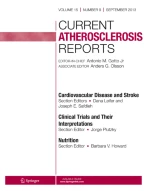Abstract
Traditionally nuts have been perceived as an unhealthy food because of their high fat content. However, recent accumulative evidence suggests that frequent consumption of nuts may be protective against coronary heart disease (CHD). So far, five large prospective cohort studies (the Adventist Health Study, the Iowa Women Health Study, the Nurses’ Health Study, the Physicians’ Health Study, and the CARE Study) have examined the relation between nut consumption and the risk of CHD and all have found an inverse association. In addition, several clinical studies have observed beneficial effects of diets high in nuts (including walnuts, peanuts, almonds, and other nuts) on blood lipids. The beneficial effects of nut consumption observed in clinical and epidemiologic studies underscore the importance of distinguishing different types of fat. Most fats in nuts are mono- and polyunsaturated fats that lower low-density lipoprotein cholesterol level. Based on the data from the Nurses’ Health Study, we estimated that substitution of the fat from 1 ounce of nuts for equivalent energy from carbohydrate in an average diet was associated with a 30% reduction in CHD risk and the substitution of nut fat for saturated fat was associated with 45% reduction in risk. Given the strong scientific evidence for the beneficial effects of nuts, it seems justifiable to move nuts to a more prominent place in the United States Department of Agriculture Food Guide Pyramid. Regular nut consumption can be recommended in the context of a healthy and balanced diet.
Similar content being viewed by others
References and Recommended Reading
American Heart Association: Invest in heart and stroke research—ensure the future of our nation, our Families and Our children. Washington, DC: American Heart Association, 1996:7.
Rosamond WD, Chambless LE, Folsom AR, et al.: Trends in the incidence of myocardial infarction and in mortality due to cornary heart disease, 1987–1994. N Engl J Med 1998, 339:861–867.
Willett WC: Nutritional Epidemiology, 2nd edn. New York, NY: Oxford University Press, 1998.
Dreher ML, Maher CV: The traditional and emerging role of nuts in healthful diets. Nutr Rev 1996, 54:241–245.
Willett WC: Diet and health: What should we eat? Science 1994, 264:532–537.
Fraser GE, Sabate J, Beeson WL, et al.: A possible protective effect of nut consumption on risk of coronary heart disease. The Adventist Health Study. Arch Intern Med 1992, 152:1416–1424.
Fraser GE, Sumbureru D, Pribis P, et al.: Association among health habits, risk factors, and all-cause mortality in a blac California population. Epidemiology 1997, 8:168–174.
Prineas RJ, Kushi LH, Folsom AR, et al.: Walnuts and serum lipids [Letter]. E Engl J Med 1993, 329:359.
Kushi LH, Folsom AR, Prineas RJ, et al.: Dietary antioxidant vitamins and death from coronary heart disease in post-menopausal women. N Engl J Med 1996 334:1156–1162.
Hu FB, Stampfer MJ, Manson JE, et al.: Frequent nut consumption and risk of coronary heart disease: prospectiv cohort study. BMJ 1998, 317:1341–1345.
Salvini S, Hunter DJ, Sampson L, et al.: Food-based validation of a dietary questionnaire: the effects of week-to-week variation in food consumption. Int J Epidemiol 1989, 18:858–867.
Grundy SM, Denke MA: Dietary influences on serum lipids and lipoproteins. J Lipid Res 1990, 31:1149–1172.
Sabate J, Fraser GE, Burke K, et al.: Effects of walnuts on serum lipid levels and blood pressure in normal men. N Engl J Med 1993, 328:603–607.
Spiller GA, Jenkins D, Gragen LN, et al.: Effect of a diet high in monounsaturated fat from almonds on plasma cholesterol and lipoproteins. J Am Coll Nutr 1992, 11:126–130.
Abbey M, Noakes M, Belling GB, et al.: Partial replacement of saturated fatty acids with almonds or walnuts lowers total plasma cholesterol and low-density-lipoprotein cholesterol. Am J Clin Nutr 1994, 59:995–999.
O’Byrne DJ, Knauft DA, Shireman RB: Low fat-monounsaturated rich diets containing high-oleic peanuts improve serum lipoprotein profiles. Lipids 1997, 32:687–695.
Sabate J: Does nut consumption protest against ischemic heart disease. Eur J Clin Nutr 1993, 47:S71-S75.
Fraser GE: Diet and coronary heart disease: beyond dietary fats and low-density-lipoprotein cholesterol. Am J Clin Nutr 1994, 59(Suppl):117–1123
Cooke JP, Tsao P, Singer A, et al.: Anti-atherogenic effect of nuts: is the answer NO [Letter]? Arch Intern Med 1993, 153:898–899.
Hu FB, Stampfer MJ, Manson JE, et al.: Dietary intake of alpha-linolenic acid and risk of fatal ischemic heart diseas among women. Am J Clin Nutr 1999, 69:890–897.
Dolecek TA: Epidemiological evidence of relationships between dietary polyunsaturated fatty acids and mortality in the multiple risk factor intervention trial. Proc Soc Exp Biol Med 1992, 200:177–182.
Ascherio A, Rimm EB, Giovannucci EL, et al.: Dietary fat and risk of coronary heart disease in men: cohort follow up study in the United States. Br Med J 1996, 313:84–90.
Pietinen P, Ascherio A, Korhonen P, et al.: Intake of fatt acids and risk of coronary heart disease in a cohort of Finnish men: the Alpha-Tocopherol, Beta-Carotene Cancer Prevention Study. Am J Epidemiol 1997, 145:876–887.
Hu FB, Stampfer MJ, Manson JE, et al.: Dietary fat intake and the risk of coronary heart disease in women. N Eng J Med 1997, 337:1491–1499.
Appel L, Moore TJ, Obrazanek E, et al.: A clinical trial of the effects of dietary patterns on blood pressure. N Engl J Med 1997, 336:1117–1124.
Singh RB, Rastogi SS, Verman R, et al.: Randomised controlled trial of cardioprotective diet in patients with recent acute myocardial infarction: results of one year follow up. Br Med J 1992, 304:1015–1019.
U. S. Department of Agriculture U. S. Department of Health and Human Services. Nutrition and your health: Dietary guidelines for Americans. Homes and Garden Bulletin No. 232 Washington, DC, U.S. Printing Office 1995.
Oldways Preservation and Exchange Trust. Food Guide Pyramid. 1998.
Author information
Authors and Affiliations
Rights and permissions
About this article
Cite this article
Hu, F.B., Stampfer, M.J. Nut consumption and risk of coronary heart disease: A review of epidemiologic evidence. Curr Atheroscler Rep 1, 204–209 (1999). https://doi.org/10.1007/s11883-999-0033-7
Issue Date:
DOI: https://doi.org/10.1007/s11883-999-0033-7


